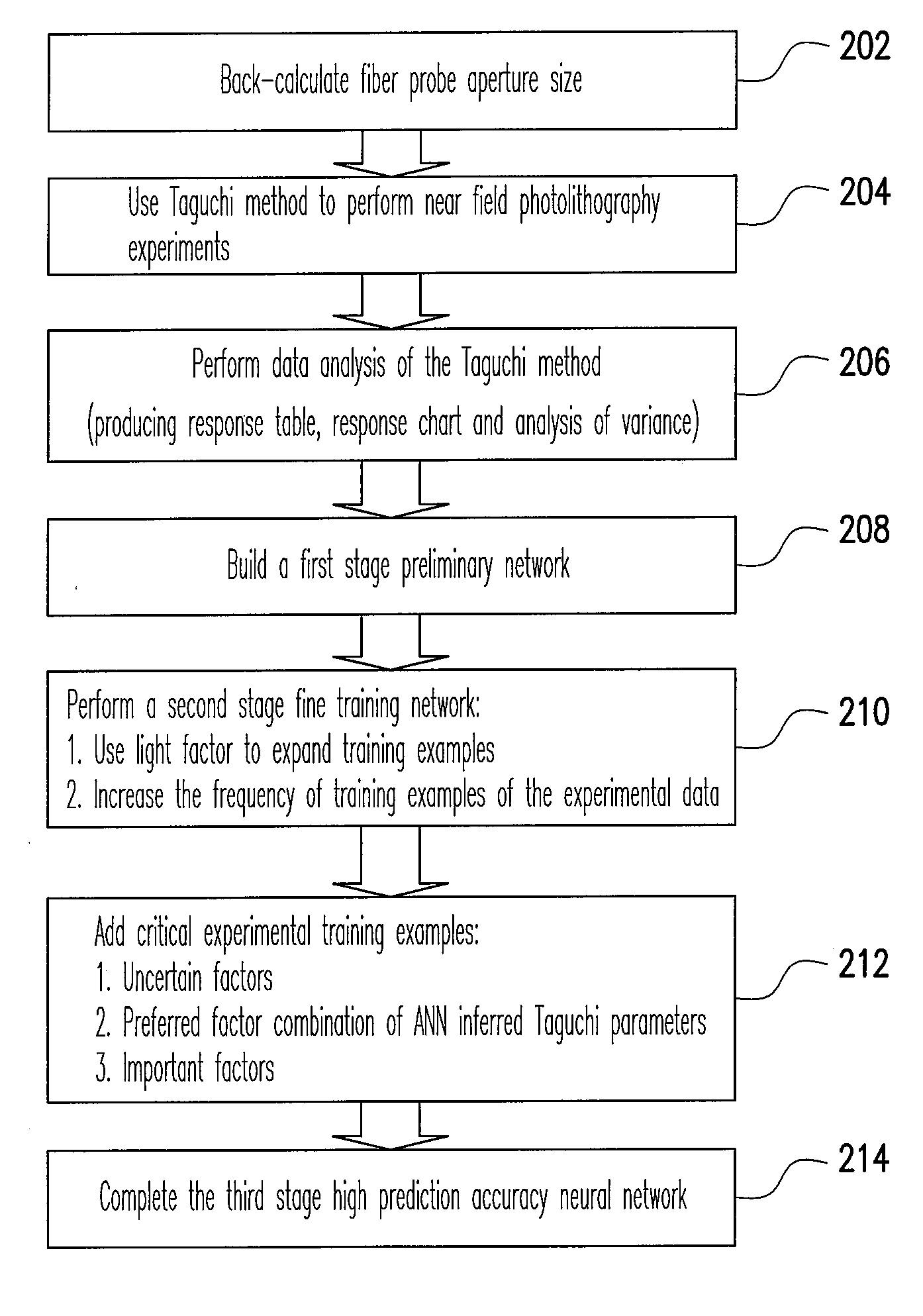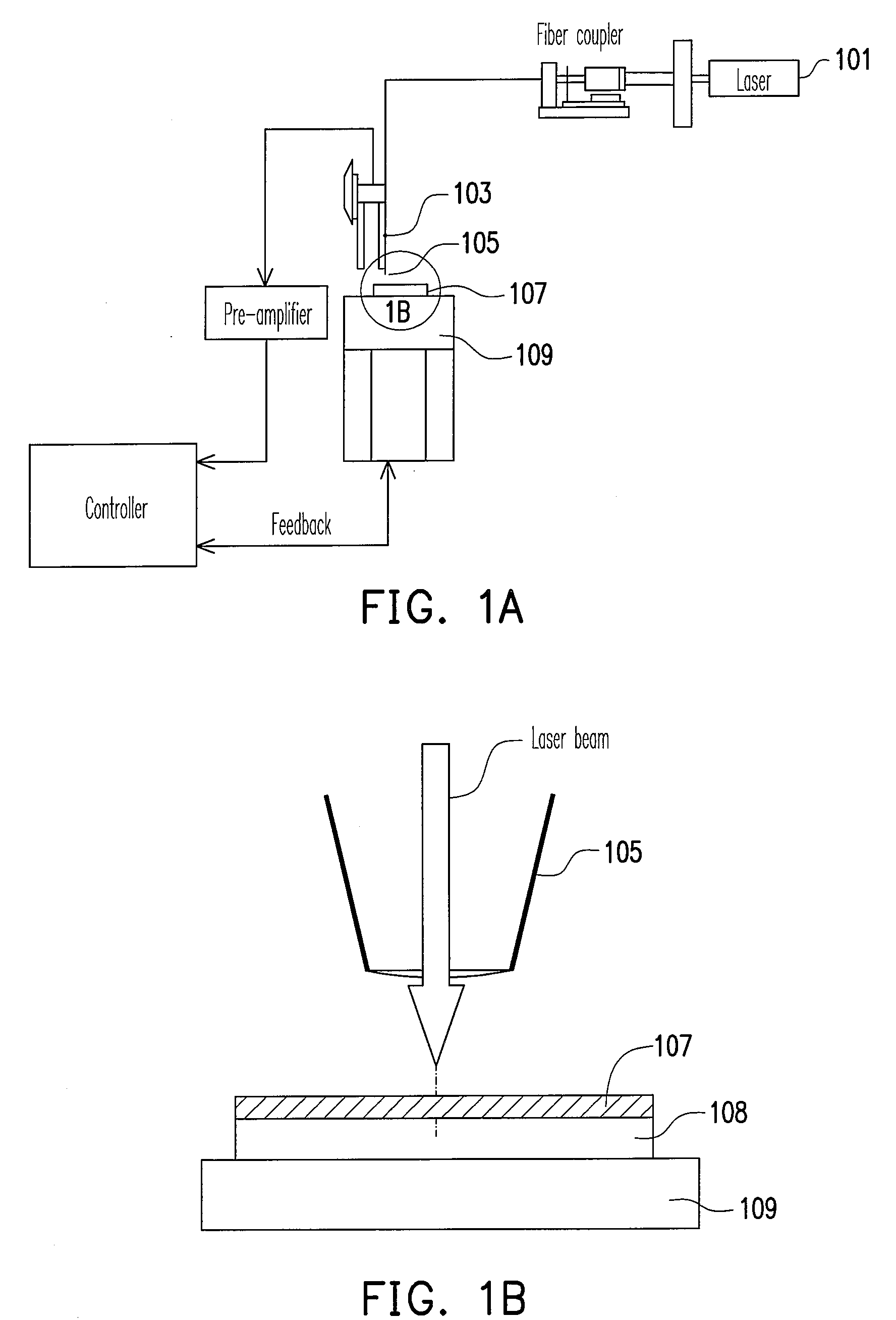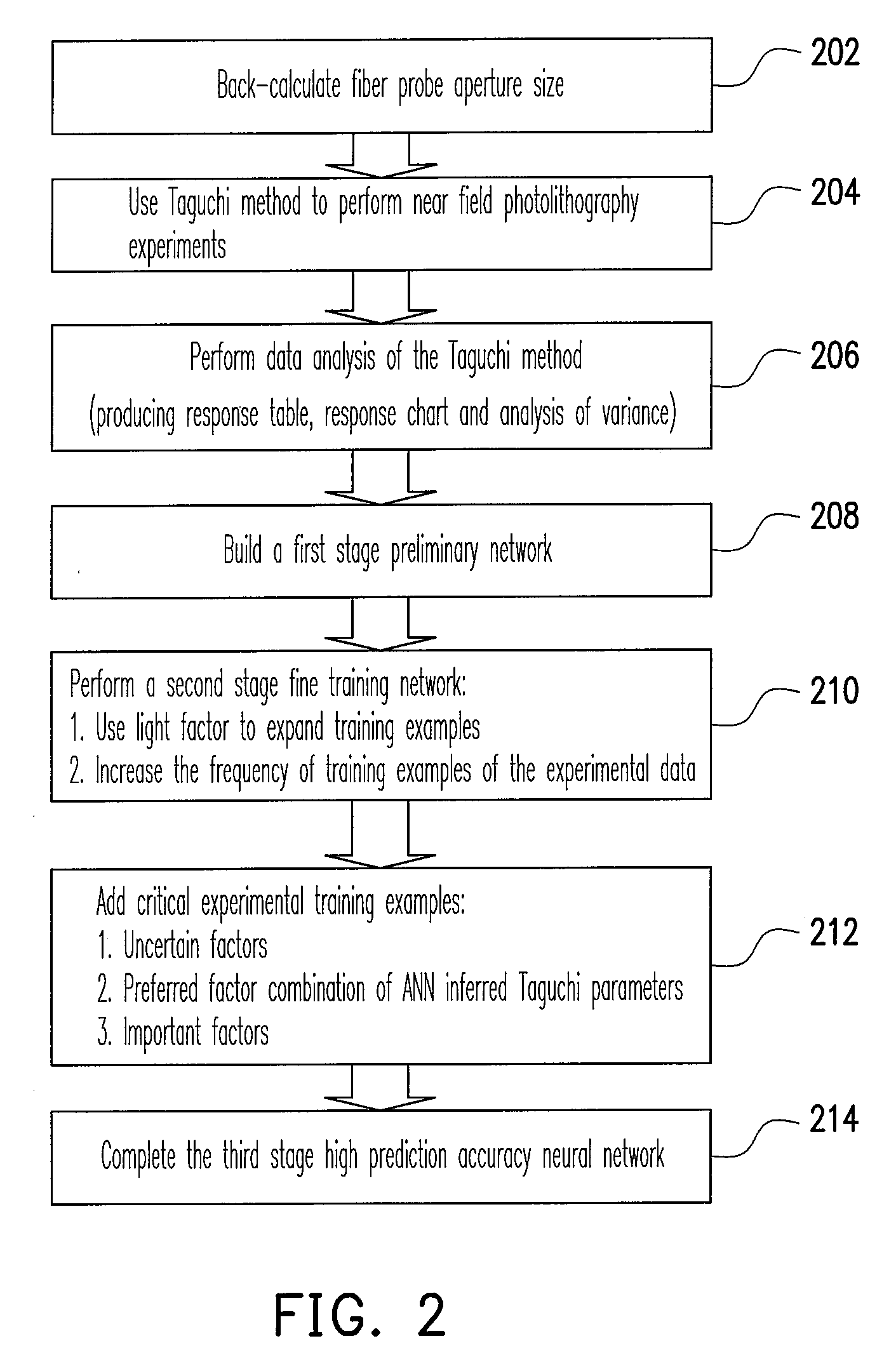Prediction method of near field photolithography line fabrication using by the combination of taguchi method and neural network
a near field photolithography and neural network technology, applied in adaptive control, biological models, instruments, etc., can solve the problems of large time and cost, high computational complexity high computational complexity of theoretical model of near field photolithography line fabrication, so as to reduce experimental frequency, shorten prediction time, and improve prediction accuracy
- Summary
- Abstract
- Description
- Claims
- Application Information
AI Technical Summary
Benefits of technology
Problems solved by technology
Method used
Image
Examples
Embodiment Construction
[0034]Reference will now be made in detail to the present preferred embodiments of the invention, examples of which are illustrated in the accompanying drawings. Wherever possible, the same reference numbers are used in the drawings and the description to refer to the same or like parts.
[0035]FIG. 1A is a schematic diagram showing the set up of a near field photolithographic line fabrication experiment. As shown in FIG. 1A, the fiber probe 105 is adhered to one side of the tuning fork 103 and the other side of the tuning fork 103 is attached to the z-axis of the machine. The near field distance between the fiber probe 105 and the test piece 107 is controlled by the shear stress tuning fork model. Because the tuning fork 103 is non-symmetrical, a difference in voltage between the two electrodes is produced when one side of the tuning fork 103 is excited. When the fiber probe 105 approaches the test piece (for example, the photoresist 107) to a near field distance, the fiber probe 105...
PUM
 Login to View More
Login to View More Abstract
Description
Claims
Application Information
 Login to View More
Login to View More - R&D
- Intellectual Property
- Life Sciences
- Materials
- Tech Scout
- Unparalleled Data Quality
- Higher Quality Content
- 60% Fewer Hallucinations
Browse by: Latest US Patents, China's latest patents, Technical Efficacy Thesaurus, Application Domain, Technology Topic, Popular Technical Reports.
© 2025 PatSnap. All rights reserved.Legal|Privacy policy|Modern Slavery Act Transparency Statement|Sitemap|About US| Contact US: help@patsnap.com



